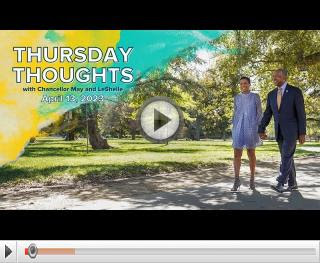This month marks the 11th audiobook I have sat down and recorded (it’s actually more, as I had to re-record Trust Me I’m Lying and Growth Hacker Marketing for new editions). As always, it is an exhausting and strange experience…and a humbling one, when they send you back the pickups to record words you pronounced wrong. But it was funny because in The Daily Dad, for the September 23 entry, I talk about this very issue, in a story about Harry Truman which I read in the Merle Miller biography I raved about a while back. In their long ranging discussions, Miller noticed that Truman mispronounced a number of words. Then it hit him– Truman had not gone to college, he did not grow up surrounded by intellectuals. His vocabulary was full of words he had picked up in books and never heard said aloud. Although I got two more years of college than Truman, my education has been largely auto-didactic as well, and since I was a kid, I have been mispronouncing words…until I was kindly (or otherwise) informed of my mistake. Anyway, it was great to finish up the final piece of The Daily Dad: 366 Lessons on Love, Parenting and Raising Great Kids before the launch in two weeks (it would mean so much if you could preorder it!!!). I will say, as much as I love that people love audiobooks (whatever gets you reading), there is something superior about physical books in my view, especially in the page-a-day format. That’s why I love bookstores and why 99.9% of the books I have put in this list over the last 10+ years, I read in the physical form. I know many of you feel the same. Anyway, if you want to grab a few of the remaining, signed/numbered first editions of The Daily Dad, please do so before we run out! Barnes & Noble also has their own edition which you can grab online, or have me sign at the event I am doing in Austin and in New York City (with special guest, Casey Neistat).
 |
Hero of Two Worlds:The Marquis de Lafayette in the Age of Revolution by Mike Duncan
Sometimes a book seems to be following you…I was in San Francisco last month and had dinner with the great Guy Raz (read his book How I Built This), and at dinner we were talking about Mike Duncan and his amazing book, The Storm Before The Storm, which I have raved about many times. The same day I was at City Light Bookstore and found out that Mike had a new book about the Revolutionary War hero Marquis Lafayette. I bought it and LOVED it, having known next to nothing about the man besides a few mentions in the various biographies I had read of Washington (a favorite here). Mike is a great writer (and former podcast guest) and I was particularly enthralled by Lafayette’s later years in the French Revolution. Then, just as I finished the book, I was in Annapolis for a talk at the U.S. Naval Academy. As I went for a run before my talk, just a few blocks from where Washington famously resigned his commission, I discovered a sign commemorating one of Lafayette’s battles at that very spot. I was meant to read this book at this moment apparently…and so are you!
High School by Tegan and Sara
One of the reasons we read is to learn, to see inside the lives of others. As the poet Margarita Engle said, books are door-shaped portals. They open up new worlds to us. Obviously fiction does that, but memoir also does it particularly well. Personally, I don’t have much sense of what it’s like to be a lesbian teenager, but I am a big fan of Tegan and Sara (and have written many, many pages while listening to their music). I also like memoirs that start and stop early (Shoe Dog, for instance, is a classic memoir about the founding of Nike…that stops in 1980). This book is not a full memoir of Tegan and Sara, in fact, it stops before they even put out their first album. But there is plenty here to learn. I will say that none of their parents come off particularly well (except maybe the stepfather) and all of them could have done well to read one of my favorite books, Adult Children of Emotionally Immature Parents. In any case, I quite liked this book and as always, I recommend reading and learning from people who have very different experiences than you. This is particularly important now in this fraught moment where much hardwon progress for gay rights and acceptance is being turned back by people who seem to lack either the exposure to or the empathy for people different than them.
South and West: From a Notebook by Joan Didion
Another month, another book by Joan Didion? Yup! This is a great road trip book through the American South (Louisiana, Mississippi, and Alabama) that, despite being from an experience over 40 years ago, holds up extremely well. My favorite observation of hers is how in the South, the Civil War feels very recent…but 1960 is made to seem like it was an eternity ago. Anyway, I have two other Southern road trip books I must recommend. The first is related to the Monster of Florence which came up in last month’s list. Douglas Preston wrote a book called Cities of Gold, which is about his retracing of Coronado’s journey across the Southwest. Just an incredible read with so much history. The other is even older but undeservedly obscure. In 1856, Frederick Law Olmstead (the designer of Central Park) took a horseback journey across the state of Texas and wrote a beautiful, fascinating travel memoir about it called A Journey Through Texas. Weirdly, it helps you understand present day Texas and America more than many other newer books. I just LOVED this book.
Robert E Lee and Me: A Southerner’s Reckoning with the Myth of the Lost Cause by General Ty Seidule
My fascination with the Civil War began when I was a kid, when my family took a road trip through the South–not unlike the one Joan Didion took. Then I moved to New Orleans while writing Trust Me I’m Lying and have read everything I can on the topic (as always the best single, accessible volume remains This Hallowed Ground by Bruce Catton). My understanding of the war as well as my understanding of the story of that war has changed quite a bit over time, just as America’s has. A recent chapter in that story has been the discussion about the removal of the Lost Cause Monuments that went up in the 20th century. I was on a run in New Orleans in 2017 when I happened to catch the removal of the Robert E. Lee monument from Lee Circle (a city Lee never once stepped foot in) and I have also worked for the last several years for the relocation of a Confederate monument from the county courthouse down the street from my bookstore in Bastrop (here’s a video of a short talk I gave on this to the Texas Historical Commission). Gen. Seidule’s book is one of the most accessible, personal and important books I have read on the myth of the Lost Cause, particularly the way it has infected military culture. As I have said before, the best way to understand current events–whether it’s the debate about CRT or political polarization–is rarely to read the news or opinion pieces. It’s to tackle smart, earnest books that look at the history of the issue or the world. This book, along with Clint Smith’s FANTASTIC book How The Word is Passed are must reads for any veteran, any parent of young kids, and any American citizen.
The Night Lives On:The Untold Stories and Secrets Behind the Sinking of the “Unsinkable” Ship by Walter Lord
Last month I recommended Walter Lord’s book on the War of 1812, another one that followed me to Annapolis. I mentioned his favorite book of mine, A Night To Remember, about the sinking of the Titanic. Turns out, he wrote another book about the Titanic called The Night Lives On. It’s less narrative nonfiction than a series of essays on lesser known facts and myths about the Titanic, but still quite good. Lord was a master of his craft, and I will have another book from him in next month’s email, so stay tuned.
Misc
I finished what I suspect will be my last book by Ms. Didion for a while, a series of essays called After Henry. When we were building out the new Daily Stoic podcast studio (see it-and the Joan Didion connection-here), we bought a huge load of books from Books by the Foot, to populate the walls. One book I found while sorting through them was The Cold War by John Lewis Gaddis, which was a great primer on a 20th century moment we appear to be re-entering now. Like I said, you understand the present by studying the past. I very much enjoyed Zach Braff’s new movie A Good Person. It has a beautiful theme of Amor Fati running through it (which we talked about on the Daily Stoic podcast). My friend Ramit Sethi (whose podcast I listen to each week) has a great new Netflix show about money and personal finance. I’ve learned a lot from him over the years and the show is great.
Kids
When my wife Samantha was a kid, someone gave her a super weird kids book called Sam’s Sandwich. She kept it, and when we had our children, she brought it back out. It’s silly and (spoiler alert) has bugs in it, but the kids love that it’s gross. Anything to get them reading, right? (Or to put down a screen) My youngest picked up the newest in the Kitty Corn series and is already asking for the next one. And as part of our bedtime routine with our oldest, we started listening to The Adventures of Captain EJ. Even though it’s not a paper book, it’s a great opportunity to explore different story mediums with my son. And we just finished Harry Potter and the Chamber of Secrets (illustrated edition) this week and are starting the next one.








 Know what kind of disasters are most common for where you live.
Know what kind of disasters are most common for where you live. Sign up for emergency alerts in your area.
Sign up for emergency alerts in your area. Build your emergency supply kit.
Build your emergency supply kit.

